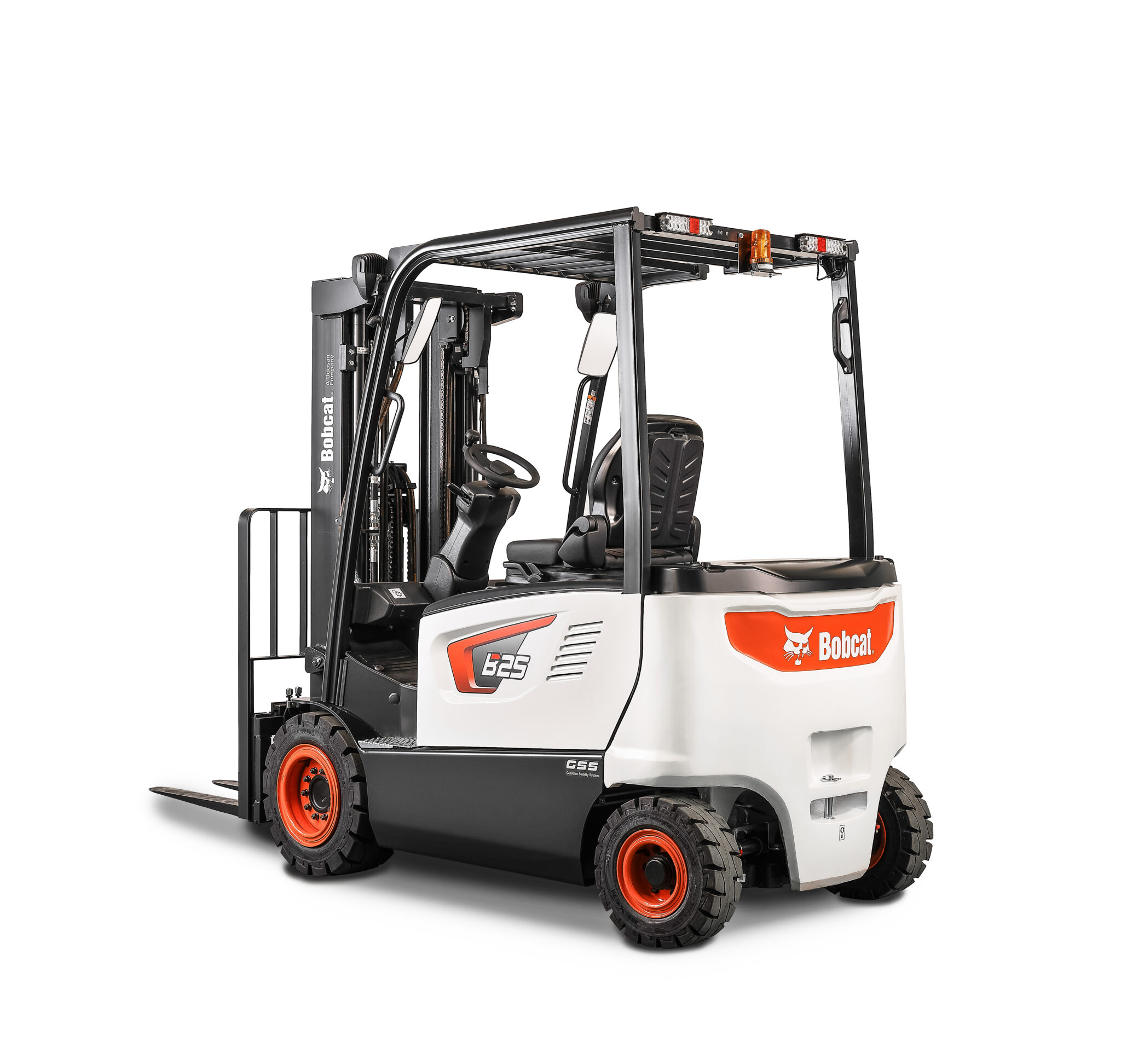Forklift Trucks Hanging Tough
23rd December 2024

Peter MacLeod caught up with Bobcat’s Jan Droogendijk to hear about the progress the forklift truck company is making since rebranding from Doosan.
Earlier this year, I travelled to Seoul to visit the former Doosan factory that is now turning out shiny white-and-orange Bobcat forklifts. Accompanying me as part of the European delegation was Jan Droogendijk, Product Manager Material Handling at Bobcat EMEA. Almost a year on from Doosan’s rebrand to Bobcat, I caught up with him to discuss all things forklift.
Logistics Business (LB): At a time when the focus is less on traditional forklifts and more on automation, what solutions do your customers come to you for?
Jan Droogendijk (JD): We aim to fulfil the specific requirements of each customer. If they need a forklift for two hours a day for a light duty application without the bells and whistles, we offer a good value truck for their money. If they need additional options to protect against the immense heat of a foundry application, we’ll build them one as strong as a tank!
LB: How has the forklift evolved over the years to meet today’s challenges?
JD: At its core, the forklift is still doing the same task it has always done – lifting goods and moving them over short distances – but MHE manufacturers have gradually shifted focus to the operator. Today’s truck is equipped with luxury items like a heater, air conditioning, air suspension seat, and fingertip controls. You wouldn’t find any of those options on forklifts of decades ago, because it was all about its ability to do the work. Today we really try to make the operator’s life easier, starting with the basic design such as making the entry step lower, to fitting displays showing all the critical parameters and error codes.
LB: Where have the biggest gains in safety been made?
JD: Some safety features we have today were considered advanced a decade ago, such as a seat belt interlock. The biggest evolution here is offering safety systems which are integrated. For instance, our guardian stability system (GSS) is a whole set of features that enhance the total safety level and stability of a truck. GSS has some features that weren’t mandatory when we launched them 10 years ago, but are now. Other features include ramp hold, or an alarm that sounds or automatically decreases speed if the mast is tilted beyond a certain point. It’s about building in a whole set of safety checks to support the operator.

LB: You use the word ‘robust’ to describe your forklifts. What are the qualities that make Bobcats more robust than a competitor truck?
JD: Firstly, if you’re building your forklift with the best components on the market with the best reputation – transmission, engine, gearbox, etc. – it’s tricky to not make a robust forklift! Of course, you can still make mistakes dimensions-wise, but if your components are reliable your forklifts will be robust. Secondly, if you compare the specs of two forklifts with identical load capacities from rival manufacturers and one has a lower service weight, the chances are high that it uses thinner metal. In a sense that’s not wrong, because the lower the thickness of the metal, the cheaper it is to construct, and a lighter machine will travel faster and cover more distance in a day. But Bobcat chooses to make the truck heavier, because a heavier truck is a more stable and reliable truck. Also, if you divide the weight well over the machine, it will drive better. A lighter truck under load offers a shaky ride, whereas the ride is smoother with a heavier truck. It puts less stress on the components, meaning it will be more reliable.
LB: Does the forklift still have a part to play in logistics?
JD: In the automated warehouse, the role of the forklift is supportive, because there are still some tasks it’s just not possible to automate or you can’t justify the investment. Moving goods from A to Z in a fixed time slot is easy to automate. But how do you get the goods into the racking or unload the lorry? The pallet will always be the same but the dimension of the goods will be different, so as long as there are different circumstances, the forklift will always have a role because of its flexibility and versatility.
LB: Coming up to a year into the rebrand, what sort of progress is Bobcat making in the market?
JD: We’re starting to see Bobcat branded forklifts going out into the markets. You see them popping up at customer sites all over the place, which is really nice after all our hard work to reach this point. The feedback we’re getting from the market is positive and there is good synergy between the forklift and compact construction equipment divisions. They are different industries but there’s also an overlap, and we can learn from the other’s best practices and make progress.
LB: Thanks a lot, Jan.
similar news

